Don’t let its delicate appearance fool you. Queen’s wreath vine (
Antigonon leptopus) is a rapid grower, is drought tolerant once established and thrives in exposures with full, even reflected, sun. This North American native is perfect for the dry climates of California and the desert Southwest, but its vigorous growth can cause it to become invasive in warm, humid climates where water is plentiful. For that reason, limit its use to California and desert Southwest gardens, where the lack of water can keep it in check. I have grown it in Arizona, where it is easily controlled by limiting the amount of water it receives.
Clusters of small pink flowers are displayed along curling tendrils in summer, displayed over bright green, heart-shaped leaves. While deciduous in winter, this water-wise beauty is a great choice for drought-tolerant gardens in summer, providing shade over an arbor or a patio.
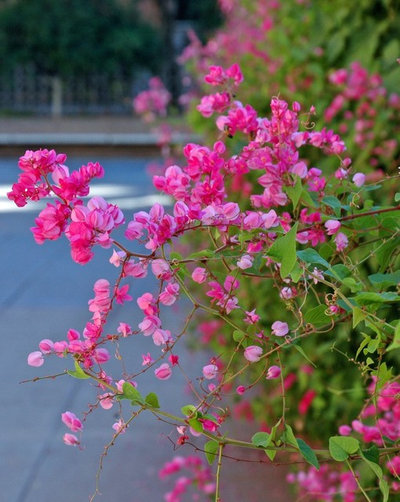
Noelle Johnson Landscape Consulting
Botanical name: Antigonon leptopusCommon names: Queen’s wreath, coral vine
Origin: Native to the Sonoran desert, specifically the Baja California peninsula and western Mexico
Where it will grow: Hardy to 20 degrees Fahrenheit (USDA zone 9; find your zone)
Water requirement: Drought tolerant once established but does best when deeply watered monthly in summer (bimonthly in arid regions) — more frequent watering will increase the growth rate; reduce or increase watering to control its size
Light requirement: Full sun, including areas with reflected sun as well as partial shade
Mature size: Up to 25 feet tall and wide
Benefits and tolerances: Drought tolerant; attracts butterflies and hummingbirds
Seasonal interest: Flowers summer through fall
When to plant: In spring, from seed or transplants
Caution: Avoid planting queen’s wreath in hot, humid climates like Florida and the Southeast, where it can become invasive.
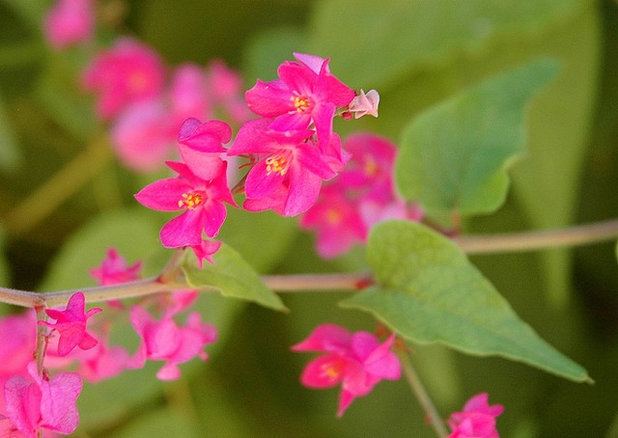
Noelle Johnson Landscape Consulting
Distinguishing traits. It’s hard to walk by queen’s wreath vine without stopping to notice its lovely light pink flowers, which are grouped along curling tendrils. Profuse blooms of ½-inch-wide flowers appear in summer into early fall on this deciduous vine, much to the delight of butterflies and hummingbirds. Cultivars, including red ‘Baja Red’ and white ‘Alba’, offer different-colored flowers.
In frost-free climates, queen’s wreath may continue to bloom throughout the cooler months of winter. Although it grows outdoors in zones 9 to 11, it can be grown in zone-8 gardens in a container if brought indoors in winter.
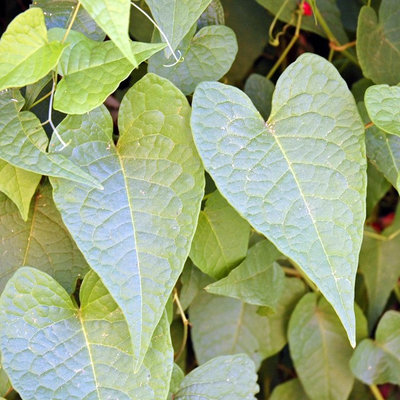
Noelle Johnson Landscape Consulting
The flowers get most of the attention, but this vine’s bright green foliage is also very attractive. The heart-shaped leaves are 4 inches long and up to 3 inches wide.
Freezing temperatures will cause this warm-weather-loving vine to die back to the ground. Prune away the frost-damaged top growth and apply a 3- to 4-inch layer of mulch in winter to help protect the roots. Once spring arrives with warm weather, regrowth from tuberous roots will be rapid and its tendrils will soon climb again.
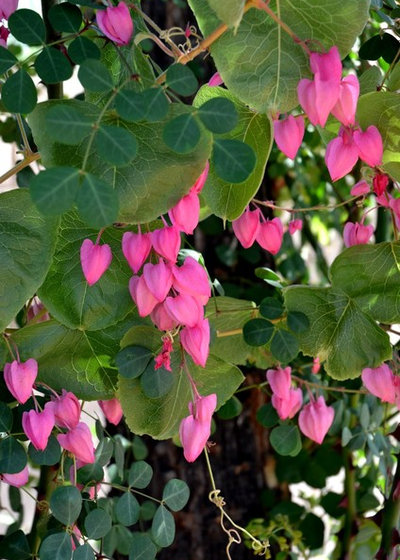
Noelle Johnson Landscape Consulting
In its natural environment, this Southwestern native can often be seen growing over shrubs or trees in arroyos and canyons. Although it is drought tolerant and a favorite addition to xeriscape plant palettes, it can become overgrown if it receives too much water.
The rate of growth and size can be controlled by how much supplemental irrigation is given. Decrease the amount of water to keep it smaller, and increase it when a large vine is desired. You can also limit its growth by planting it in a pot.
Shown: Queen’s wreath vine growing in the branches of a cascalote tree

Noelle Johnson Landscape Consulting
How to use it. Make the most of the summer shade and color that queen’s wreath vine offers by planting it next to a patio or pergola, and provide support for it to grow over the top. It also makes a great screening plant when grown along a fence; just be sure to provide a trellis.
Grow it along a wall, several feet behind summer-blooming plants, such as desert ruellia (
Ruellia peninsularis), lantana (
Lantana spp)
or yellow bells (
Tecoma stans var.
stans), for maximum color impact.
A unique use for this pink-flowering beauty is to allow it to grow as it does in nature, climbing among the branches of cascalote (
Caesalpinia cacalaco), mesquite (
Prosopis spp) or palo verde (
Parkinsonia florida) trees, where its pink, heart-shaped flowers will add an unexpected touch of color and beauty.
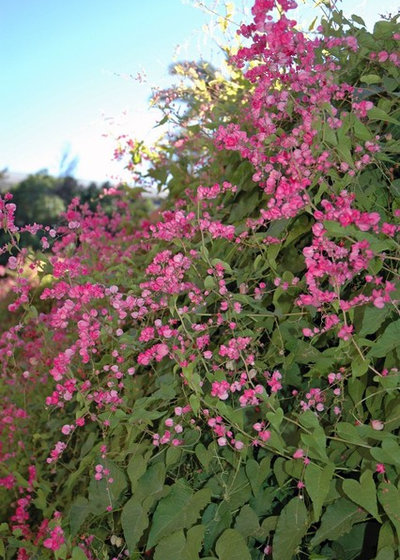
Noelle Johnson Landscape Consulting
Planting notes. Plant it in full sun or partial shade in well-drained soil. Water it twice a week the first month after planting and then weekly during the first summer. Thereafter, water to a depth of 1½ feet once a month, spring through fall. (Water twice a month in low and high deserts.) In all regions, rely on natural rainfall in the winter.





